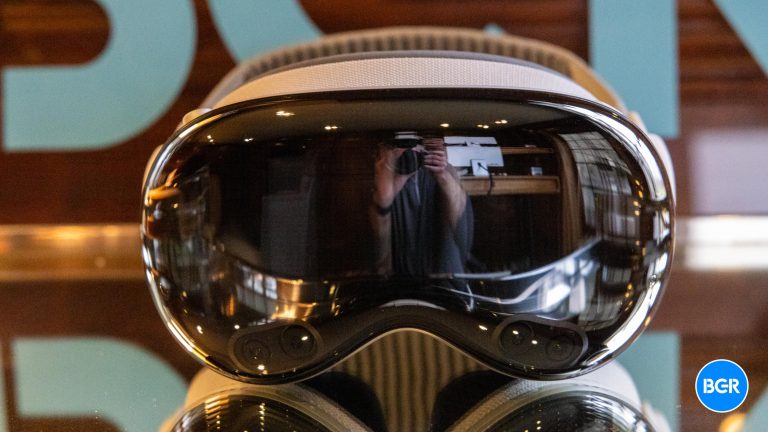After the release of Apple Vision Pro in the US in early February, Apple is now expanding this spatial computer to nine more countries. This announcement was made during WWDC 2024.
With the Apple Vision Pro expansion, this spatial device is coming to China, Hong Kong, Japan, and more. Users in those regions can take advantage of the company’s first spatial computer – and just before Apple launches the upcoming visionOS 2 update.
Apple Vision Pro has a premium look by adding an aluminum frame and a high-end mesh for the head, close to what the AirPods Max offers. The design goal of Vision Pro is not to be isolated but to interact with others. The EyeSight shows your eyes and expressions through the outer display.
Unlike other headsets, the enclosure is made of a singular piece of three-dimensional laminated glass that flows into an aluminum alloy frame that curves to wrap around the user’s face. The Light Seal flexes to conform to the user’s face, delivering a precise fit while blocking out stray light.
Tech. Entertainment. Science. Your inbox.
Sign up for the most interesting tech & entertainment news out there.
By signing up, I agree to the Terms of Use and have reviewed the Privacy Notice.
 Image source: Jonathan S. Geller
Image source: Jonathan S. Geller
The Headband provides cushioning, breathability, and stretch. The Fit Dial lets users adjust Apple Vision Pro precisely to their head.
The device has two 4K micro OLED displays with 23 million pixels combined with over a dozen cameras, and it features a Digital Crown that the users can spin to switch between VR and AR modes.
Apple’s spatial computer uses the company M2 processor, which Apple says “simultaneously runs visionOS, executes advanced computer vision algorithms, and delivers stunning graphics, all with incredible efficiency,” while the new R1 chip is specifically dedicated to processing input from the cameras, sensor, and microphones, streaming images to the displays within 12 milliseconds for a virtually lag-free, real-time view of the world.
Apple Vision Pro includes 12 cameras and five sensors that are responsible for monitoring hand gestures, mapping the external environment, and recording spatial videos or taking photos.
Apple says two cameras transmit real-world images using AR mode, while the others work for head and hand tracking and real-time 3D mapping. The company even added infrared flood illuminators to help hand tracking in low-light conditions. Like iPhones and iPads, Apple also included LiDAR depth sensors as well.
Apple Vision Pro expansion: These are the countries getting this spatial computer
Pre-orders for China mainland, Hong Kong, Japan, and Singapore beginning this Thursday, June 13, at 6 p.m. PT and availability beginning Friday, June 28. Customers in Australia, Canada, France, Germany, and the United Kingdom can pre-order Vision Pro beginning Friday, June 28, at 5 a.m. PT, with availability beginning Friday, July 12.

